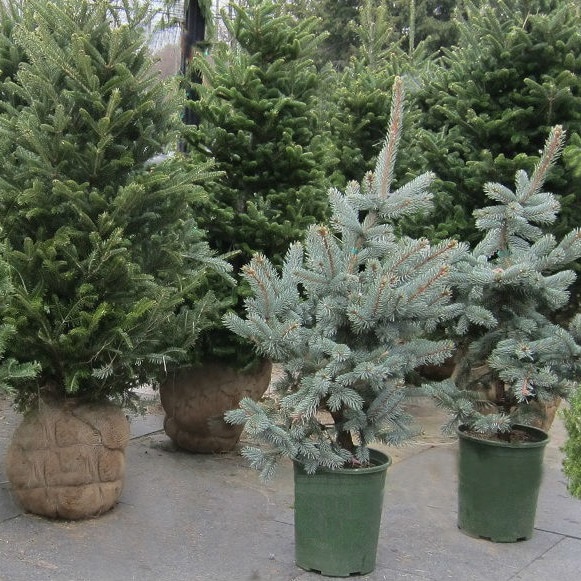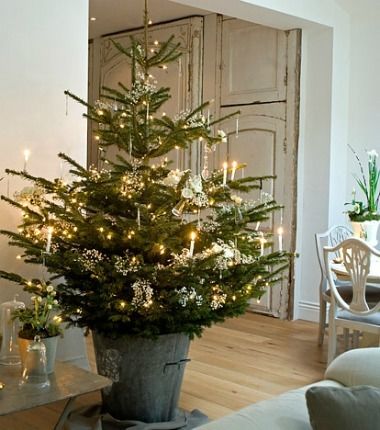

Most people think of only two choices for a Christmas tree – real, freshly-cut (often called a “live” tree), or artificial (“permanent”). Each type offers advantages depending upon personal preferences: aroma, touch, appearance, budget, time considerations and of course, tradition. Selecting (or even cutting) the tree can be a highlight of the season, especially for young children. Alternatively, simply retrieving the artificial type from the closet or setting-up a pre-decorated one may be more practical for some.But a third (and more sustainable!) option may make sense for some families — an actual Living Christmas Tree: it continues to grow and add value around your home, maturing to an enduring, growing commemoration of this season. In addition to their freshly-cut trees, garden centers often offer a selection of living trees, still growing with their roots contained in a large pot or burlap wrapping.
Your Living Tree will become a permanent feature at your home, so you’ll need to take some important steps now to assure best outcomes.
- Choose a Living Tree that that you are physically able to manage and suits your garden. You’ll need to physically move it several times getting it indoors, setting it up for Christmas and bringing it to your garden;
- Put some thought into choosing the location where your Living Tree will be planted, considering that it will grow larger as it matures;
- Prepare the planting hole before the ground freezes solid. Fill the hole with loose leaves or hay to keep it from freezing. Store the extra soil you remove where it will stay unfrozen until you are ready to plant. For larger trees, pound stakes into the ground now to hold guy-wires for stabilizing the top.
Unfrozen or minimally-frozen ground greatly facilitates the preparation of a site for your tree. Once you dig the planting hole, you can use it to store your Living Tree until it’s time to bring it indoors; it can also be held in your unheated garage if that’s more convenient. Its roots should be thawed when you bring it into your home. To help assure it maintains its winter dormancy, choose the coolest possible location to set it up and minimize its time indoors – seven to ten days should be the maximum for most Living Trees if your indoor temperatures are above 65°F. And be sure to maintain even-moisture around the roots until it is planted in the ground.
Plant your Living Tree into the ground immediately when you take it out of the house, even if the temperature is below freezing; if the weather is truly miserable, you can hold it for a few days in a cool location. Follow normal planting guidelines (available at the garden center where you purchased), and immediately water-in thoroughly. Add bark or wood-chip mulch about 6” deep around the base where the soil was disturbed. Stabilizing the top with a stake or guy-wires helps reduce sway and enables the roots become well established. Next April be sure to pull back all but 1-2” of mulch from around the trunk, making sure the root crown is open to the air.
Our garden center experts can give you more detailed information. This might be the ideal Christmas to consider this third alternative and start a tradition that your family will enjoy for years to come!
About the Author
Wayne Mezitt is a 3rd generation nurseryman and a Massachusetts Certified Horticulturist, now chairman of Weston Nurseries of Hopkinton and Chelmsford, MA, and owner of “Hort-Sense”, a horticultural advisory business. Wayne currently serves as Trustee chairman for the Massachusetts Horticultural Society at The Gardens at Elm Bank in Wellesley MA.









